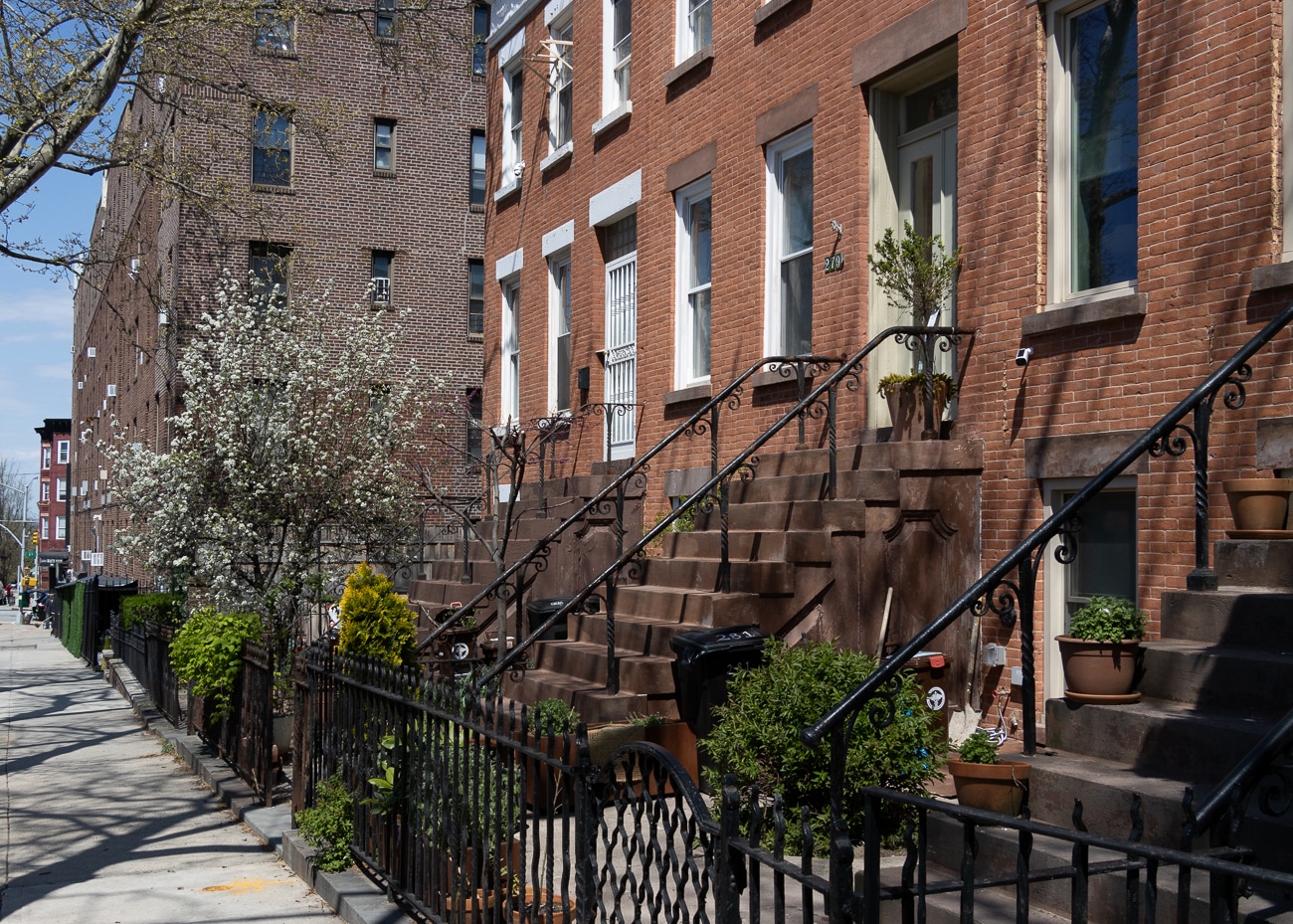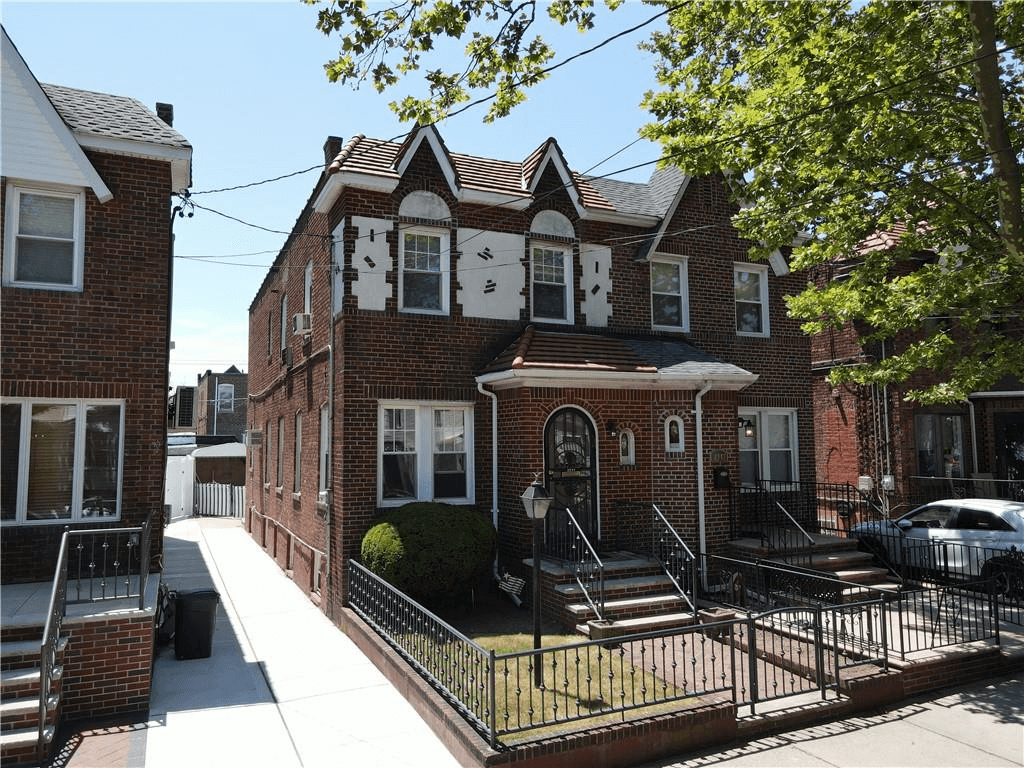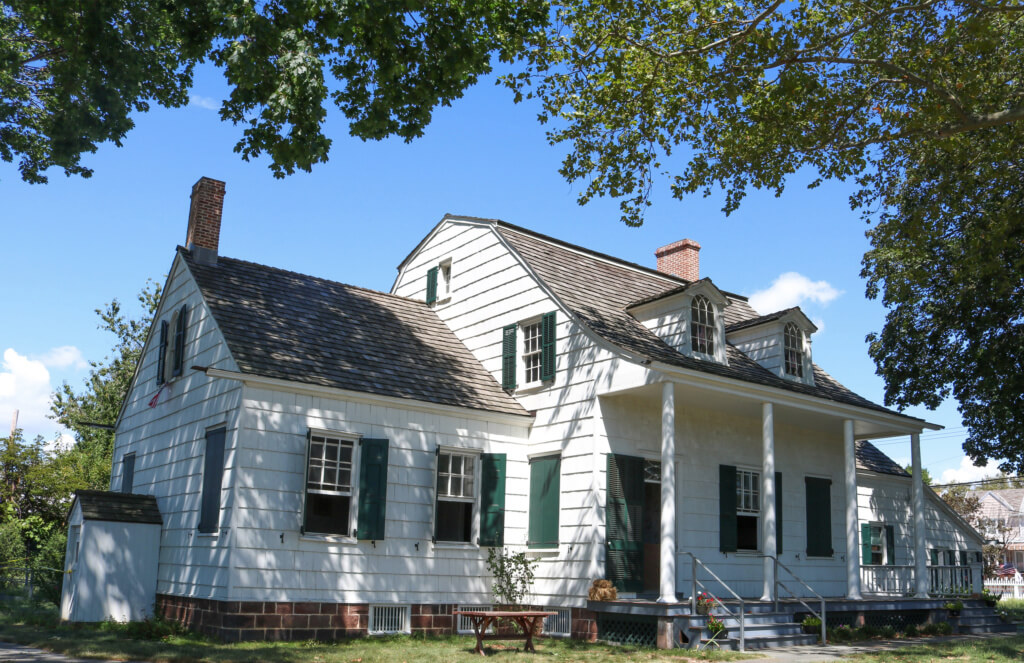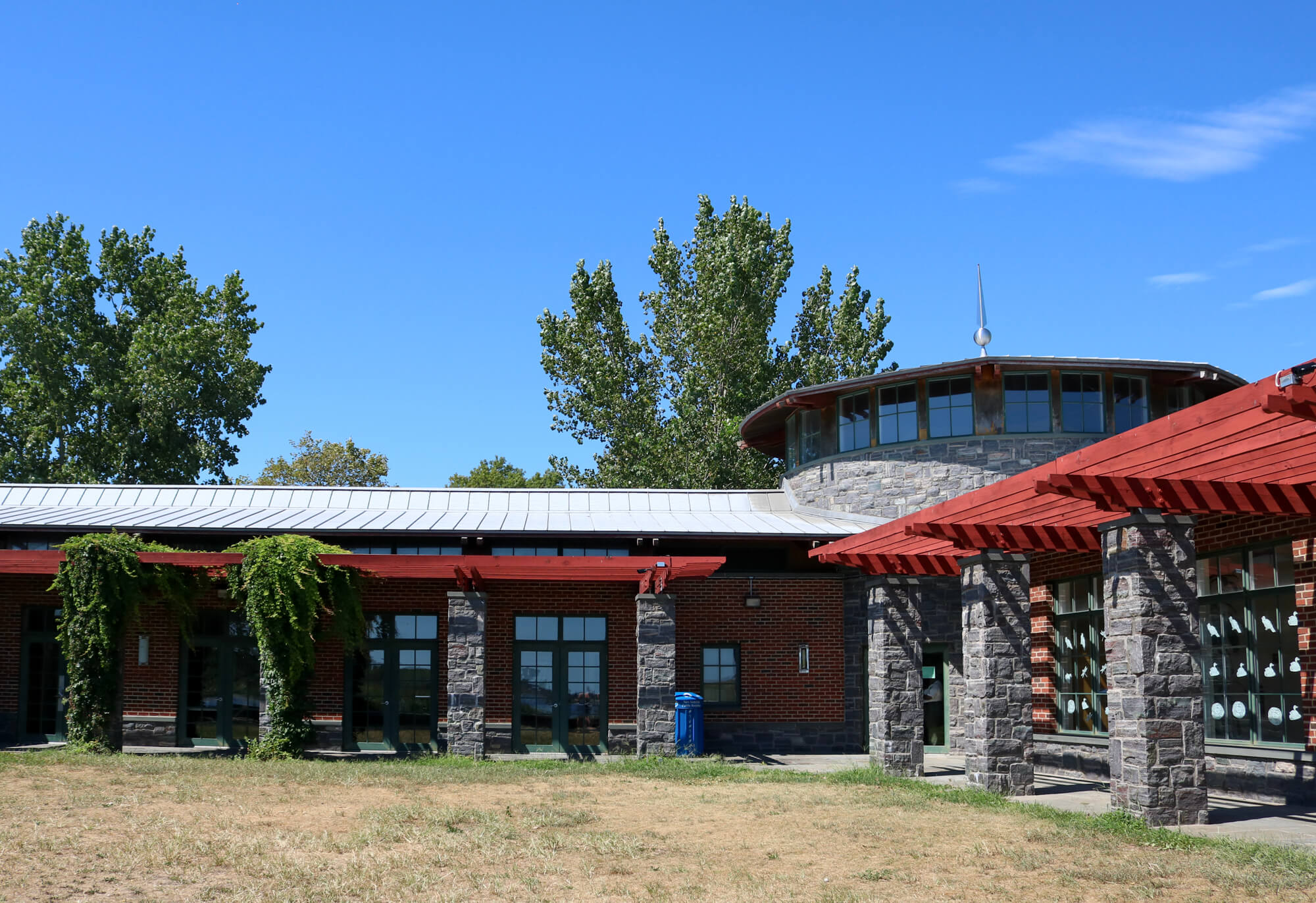Park Slope Can't Measure Up to Marine Park
That’s what one Marine Park resident confided to the NY Times this weekend, in their weekly Living In section. The former Sloper said Marine Park, “reminds me of what neighborhoods used to be like before they became advertisements for themselves. The subway stop-less neighborhood is filled with “police officers, firefighters, postal workers and city employees,”…

That’s what one Marine Park resident confided to the NY Times this weekend, in their weekly Living In section. The former Sloper said Marine Park, “reminds me of what neighborhoods used to be like before they became advertisements for themselves. The subway stop-less neighborhood is filled with “police officers, firefighters, postal workers and city employees,” many of whom are second or third generation Marine Park-ers (Park-ites?) and purchase homes nearby those in which they were reared; the civic association’s motto is “Improve, Don’t Move.” The homes, many of them semi-attached or semi-detached (we believe the difference has something to do with where and how much of the homes are connected; architecture buffs, please inform), start in the $350,000 range and easily climb to $750,000. One-bedroom rentals can start in the $1,000 range. Among the neighborhood’s treasures are Marine Park itself (Brooklyn’s largest) and the Hendrik I. Lott House, an 1800’s Dutch farmhouse on East 36th Street filled with “clues into a vanished way of life,” with “wells, privies and a stone kitchen between the house and the street.”
Isolation Is Pretty Splendid [NY Times]
Photo by Stu_Jo.









People in Park Slope and Marine Park have much to learn from each other.Recent arrival Park Slopers can gain a more I’ll-keep-an-eye-on-your-house-when-you’re-away casual neighborliness and and a believable Brooklyn accent that will help them form into true Brooklynites. Native Marine Parkers can gain the civic organizing of food coops, farmers markets and street fairs that will help them live up to the motto “Don’t move, improve.”
One unsing group that truly lives up to this motto are the native hold-outs and long-time residents of Park Slope who put up with brothels and cack houses for 2 and a half decades rather than abandon their gorgeous 19th century neighborhood.
There are examples of that more Victorian-era feel in a certain type of Marine Park house. The attached and semi-deatched(corner houses)1930’s brick tudor town houses. The original wood detailing and basement tin ceilings, while modest by 19th century Park Slope standards is reminiscent of a more elegant time.If they’ve been properly brickpointed in the last 30 years and have an intact gas lamp in the front yard they appear a bit Londonish.
As a resident of Marine Park and an avid visitor to Park Slope I would have to say that they both have their merits. To classify Marine Park as a “whitebread” community would be wrong. It may not have the diversity of Park Slope but few places in the city do. It does however certainly maintain a neighborhood feel where people put down roots and raise families. There is an abundance of children and the Park an Nature Center are true gems in Brooklyn. Architecturally, Park Slope is hard to beat, but the homes in Marine Park vary greatly from modest semi-attached homes to grand Dutch Colonials and Tudors. Marine Park is not isolated from the rest of the city, but it does have that country in the city feel with plenty of green space. Lawns are neatly manicured and people take pride in their carefully tended gardens. Park Slope has many homeowners who take pride in their homes but many of the blocks are shamefully littered with trash which may just be a density problem. Also, I am a great lover of brownstones, but there is something to be said for taking what were once one-family homes and selling off each floor as condos for maximun profit. It just leads to overcrowding and nothing looks worse than eight garbage pails sitting outside of a $2 million house. Park Slope certainly wins the restaurant and coffee shop categories, but many people in Marine Park cook at home and share coffee with their neighbors on their stoops. One other plus for Marine Park is the wonderful sense of patriotism that is exhibited on many of the houses. Flags fly from most homes all year. Regarding traffic, I can’t see how Marine Park could be seen as a traffic problem. You can hear a pin drop at night and outside of the main avenues, side streets are usually filled with children playing football or basketball. In conclusion, Marine Park is a wonderful place to live and raise a family, what it lacks in trendy shops, it more than makes up for in community spirit. Happy Thanksgiving.
Regarding the clarification of “semi-detached”:
1.) “Fully detached” or simply “detached” – house that is not attached to its neighbors, i.e. mansion-type, i.e. both side walls will have windows, i.e. hope you got the idea. More desirable in terms of real estate value, due to more light, typically a bit more space compared to a semi-detached, and privacy/landscaping advantages.
2.) “Semi-detached” or “semidetached” or “semi” – house that shares a “party wall” (which isn’t really as much fun as it sounds) with its neighbor, i.e. there are windows on only one side wall.
Historical tidbits:
Many semi-detached houses have a mirror layout, so what you see on the left side is what you can expect on the right side, especially in neighborhoods that were built up “according to a master plan” after the 1930’s-40’s (Marine Park, Futurama, Canarsie, etc.) Keep that in mind when real-estate shopping.
Note the “after the 1930’s-40’s” part – Downtown nabes and Bay Ridge were built during the “Brownstone Boom”, so the vast majority of buildings there are brown/limestone rows, all attached except, for the corners of course.
3.) “Fully attached” or “attached” – house that shares BOTH side walls with its neighbors. Park Slope mid-block brownstones, for example. Nevermind the desireability of the neighborhood, having no side windows and no driveway is a bummer 😉
@Marie Brown: true, traffic on Nostrand/Gerritsen does suck (especially the idiot kids doing 65MPH in a residential area… what, in a hurry for a pine box?), but the “inner streets” are pretty quiet, actually. So, another tip for house hunters: don’t get a house fronting an avenue. Between the traffic and the buses at all hours, you’ll have to invest quite a lot in sound insulation.
As much as I like the Salt Marsh Nature Center off of Ave. U it really should be noted that it is really a garbage dump fifty years later. Most of it was swamp filled when Robert Moses build the Belt Parkway from the former military road. At the same time, true to form, he ripped out the 17th Century Tidal Mill off of what was to become Ave. W. Much of the neighborhood is really post WWII as Moses determined that the neighborhood would be over run with cars when he failed to extent the subway system beyond the junction (Flatbush and Nostrand). I lived there for 15 years, made money on our building but really we were over-run with traffic. Most of the neighbors fences had at some time been destroyed by some driver who couldn’t hold his car on the road at only 50 MPH, not unusual on those streets. The North-South roads, especially Flatbush, Gerritsen and Nostrand are really on-ramps for the Belt Parkway and the traffic is relentless even into the wee hours of the morning. We sold our house at a profit and moved back to South Brooklyn where we had to leave 30 years before because we couldn’t afford the rent. With the profit we made on our traffic over-run house in Marine Park, as much as we liked it, we bought a nice two family in CG. It is much more quiet here at night. Lots of parking in Marine Park, lots of cars too, coincidence, I think not.
Wow – I worked on the Lott house about 10 or 11 years ago (right before the house trust acquired it). It was in pretty sorry shape back then – nice to see it reborn.
It is also worth noting that Brooklyn was a particular center of the abolition movement. We’ve all heard about the underground railroad in recent years, but Brooklyn was also home to many of the days leading abolitionists. And yes, this at the same time that many NYers supported the south because of the close commercial interests.
I’m a resident of Marine Park, and for those who want a home that is affordable, this is the place. There are some very nice brick tudor homes, as well as detached colonials. The photo in the Times article showed the semi-detached “Realty” houses. They are small houses (14*34) that were built in the 1920s. There are also a lot of 1 family brick houses with nice parquet floors built in the 1930s. You can get the Q or B train at the Kings Highway stop. My husband and I walk to the train each day. It’s a fifteen minute walk from where we are. The bus is very reliable, and can get you to the subway in 5 to 10 minutes. The trip on the B express is a short trip to Manhattan. Marine Park is the next neighborhood after Midwood, and only a short trip to Kensington for those who don’t know where Marine Park is. There is a beautiful Salt Marsh Nature center on Avenue U with a 1 mile walking trail next to the Gerittsen Creek. You can launch a kayak from the side of the creek. The neighborhood is a short bike ride away from Coney Island, and Riis Park. You don’t need a car to live around here, and it is accessible to public transportation.
As long as the residents of old mill basin stay on their side of Flatbush ave, Marine Park is kinda ok.
Just to add to what Sam pointed out about the Dutch and slavery:
-even after the English took over NY and Brooklyn, the Dutch farmsteads in Brooklyn held on to their slaves, even when it disappeared elsewhere in the northeast.
-New York was the most pro-South northern city during the Civil War. This sympathy had to do with the fact that alot of the cotton grown in the South was shipped overseas through NY’s port, and also NY was the financier to the South.
The attached homes in Marine Park (many with shared driveways) were built probably in the 1920’s. They are cute, modest homes. Not like the 19th century bourgeoise palazzeti that line the streets of Park Slope, Clinton Hill, Brooklyn Heights, etc.
The reason I like the Lott House (and it is worth a drive out to see it) is because it is one of the few house museums in the City that gets into the history of the slaves who lived and worked for the Lotts. All the prosperous Dutch families had slaves in NY. And most of the farming and housekeeping was done by black slaves. We tend to forget that.